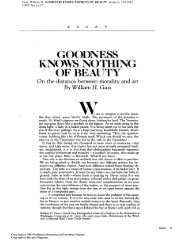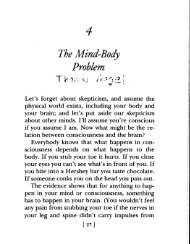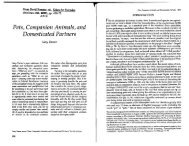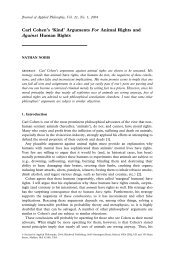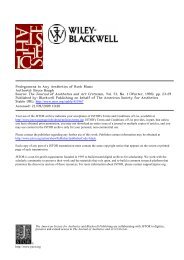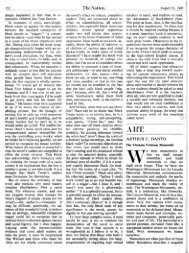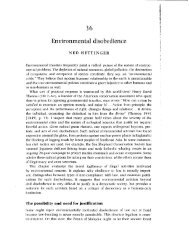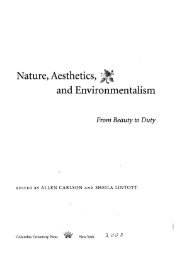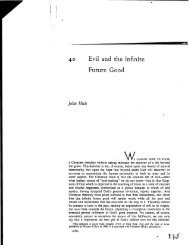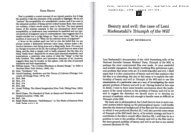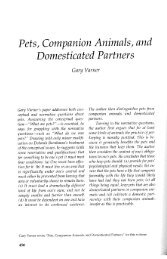Karen Hanson, "How Bad Can Good Art Be?"
Karen Hanson, "How Bad Can Good Art Be?"
Karen Hanson, "How Bad Can Good Art Be?"
- No tags were found...
Create successful ePaper yourself
Turn your PDF publications into a flip-book with our unique Google optimized e-Paper software.
<strong>How</strong> bad can good art be<br />
moral space from which one might praise or even just leave art alone<br />
seems precipitously eroded. We have not, however, so far found<br />
much real reason to worry about a depraved discontinuity between<br />
art and life. Is the moral quicksand in fact on the other side, in the<br />
connection between art and life<br />
We should step carefully here, if only to mark off one serviceable<br />
path for exploration rather than another. To investigate the idea that<br />
art may corrupt, we need, of course, not only a standard of morality<br />
or, at any rate, some defensible moral judgments, but also some<br />
detailed empirical evidence. It may be no more difficult to gather and<br />
interpret properly evidence about art's effects than it is to obtain useful<br />
evidence about a host of other matters, but it is certainly not obvious<br />
that philosophy, or even what philosophy may call "common<br />
sense," has this evidence to hand.<br />
It must be admitted that current U.S.law has a different, a less cautious<br />
or more generous view of the disclosures here of common<br />
sense. Writing for the majority in Paris Adult Theatre I v. Slaton, and<br />
citing Justice Cardozo's assertion that "all laws in Western civilization<br />
are 'guided by a robust common sense,"' former Chief Justice<br />
Warren Burger dismisses the import of the argument that no scientific<br />
data conclusively demonstrate "that exposure to obscene materials<br />
adversely affects men and women or their society":<br />
If we accept the unprovable assumption that a complete education requires<br />
the reading of certain books, and the well nigh universal belief that good<br />
books, plays, and art lift the spirit, improve the mind, enrich the human personality<br />
and develop character, can we then say that a state legislature may<br />
not act on the corollary assumption that commerce in obscene books, or public<br />
exhibitions focused on obscene conduct, have a tendency to exert a corrupting<br />
and debasing impact leading to antisocial behavior 14<br />
Leaving aside the crucial issue of this·case, the controversy about<br />
state censorship, we can focus just on Burger's string of suggestions<br />
about the relations between art and morality and on his sense of the<br />
logical connections between those basic propositions. There seem to<br />
be no clear rules of deduction guiding an inference to the "corollary"<br />
that grounds the legislative action here in dispute, but, after all,<br />
Burger also acknowledges that all these contentions may simply be<br />
assumptions. Is there in fact widespread, common, acceptance of<br />
these claims Surely at least the first of these propositions - "that a<br />
complete education requires the reading of certain books"- is openly<br />
debated. That we do not have here a settled social assumption is<br />
213



